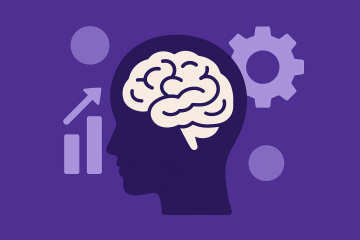A Doctor’s Take on Burnout: From Depression to Recovery
October 14, 2025

Burnout syndrome is a complex state of physical, emotional, and cognitive exhaustion caused by prolonged stress and work overload. In this interview, addiction specialist Adam Kulhánek shares practical insights. You’ll learn what happens in the brain and body under chronic stress, how burnout differs from depression, common self-treatment strategies and their risks, as well as the role of recovery duration, physical health, and lifestyle. At the end, the doctor offers his own tips for maintaining mental resilience and balance.
Which neurobiological or hormonal mechanisms change while experiencing burnout?
During prolonged stress and overload, the body’s stress system becomes highly activated. The hypothalamus, pituitary gland, and adrenal glands release excessive amounts of cortisol, along with adrenaline and noradrenaline. This keeps the body and mind in a state of tension and drains energy, making recovery harder. Over time, rest and sleep no longer restore energy, leading to immune suppression and increased inflammation. For example, workaholics often show higher cortisol levels and elevated inflammatory markers such as cytokines and interleukins.
How does burnout differ from depression?
Burnout is not mainly defined by typical depressive symptoms. People with burnout often feel alienated, cynical, and disconnected from meaning or others. Sleep problems are common. Unlike depression, burnout can present with physical and emotional stress reactions such as palpitations, panic attacks, fear, and a sense of threat. Physical symptoms may include high blood pressure and digestive issues like a tight stomach or loss of appetite. In severe cases, burnout can escalate to heart problems or stroke.
What strategies do patients at risk of burnout use to treat themselves?
Clinicians call these maladaptive coping mechanisms. They may provide short-term relief but carry serious risks or lead to addiction. Common strategies include overuse of sleep medication, excessive alcohol consumption, or stimulants such as cocaine in corporate environments to maintain performance. These approaches often lead to a much worse crash, sometimes resulting in a heart attack.
When is full recovery from burnout biologically and psychologically possible?
Recovery depends on how advanced the burnout is. Generally, the body and mind need at least several months to recover, with three to six months for basic regeneration. Emotional recovery, including regaining motivation and the ability to enjoy life, usually takes around a year. In some cases, full recovery may take up to two years. Burnout is often the result of long-term overload, so quick fixes are unrealistic.
What motivational patterns are common in people prone to burnout?
High-risk patterns include perfectionism and high self-expectations, often with black-and-white thinking and strong self-criticism. Another pattern is the need for external validation, where self-worth depends on performance rather than being valued as a person. Family, education, or authority figures often reinforce this. A third type includes highly energetic and hyperactive individuals who love their work but push themselves too hard, eventually collapsing from exhaustion.
Can a long-term lack of meaning in work contribute to burnout?
Yes, but lack of meaning alone usually does not cause full burnout. Stress and overload are critical factors. Burnout often occurs when people face ongoing frustration, such as unappreciated work or repetitive tasks. This is common among healthcare workers, social service professionals, and caregivers.
What role do sleep, exercise, and nutrition play?
Regular physical activity, a balanced diet, proper hydration, and at least seven hours of quality sleep are effective preventive measures. However, burnout can still affect even healthy, high-performing individuals, such as elite athletes, when extreme discipline and pressure lead to overload. Prevention requires attention to both physical health and psychological well-being, including stress management, relationships, and meaningful personal activities.
What do you personally do to stay fit?
I work intensively, so I carefully monitor my energy and recovery. Sport is my main recovery tool, including running, cycling, gym, golf, or swimming. I maintain a disciplined routine with training, nutrition, sleep, and recovery. Visualization and journaling are also important tools. For relaxation, I enjoy reading or spending time in a café with my wife or close friends.




